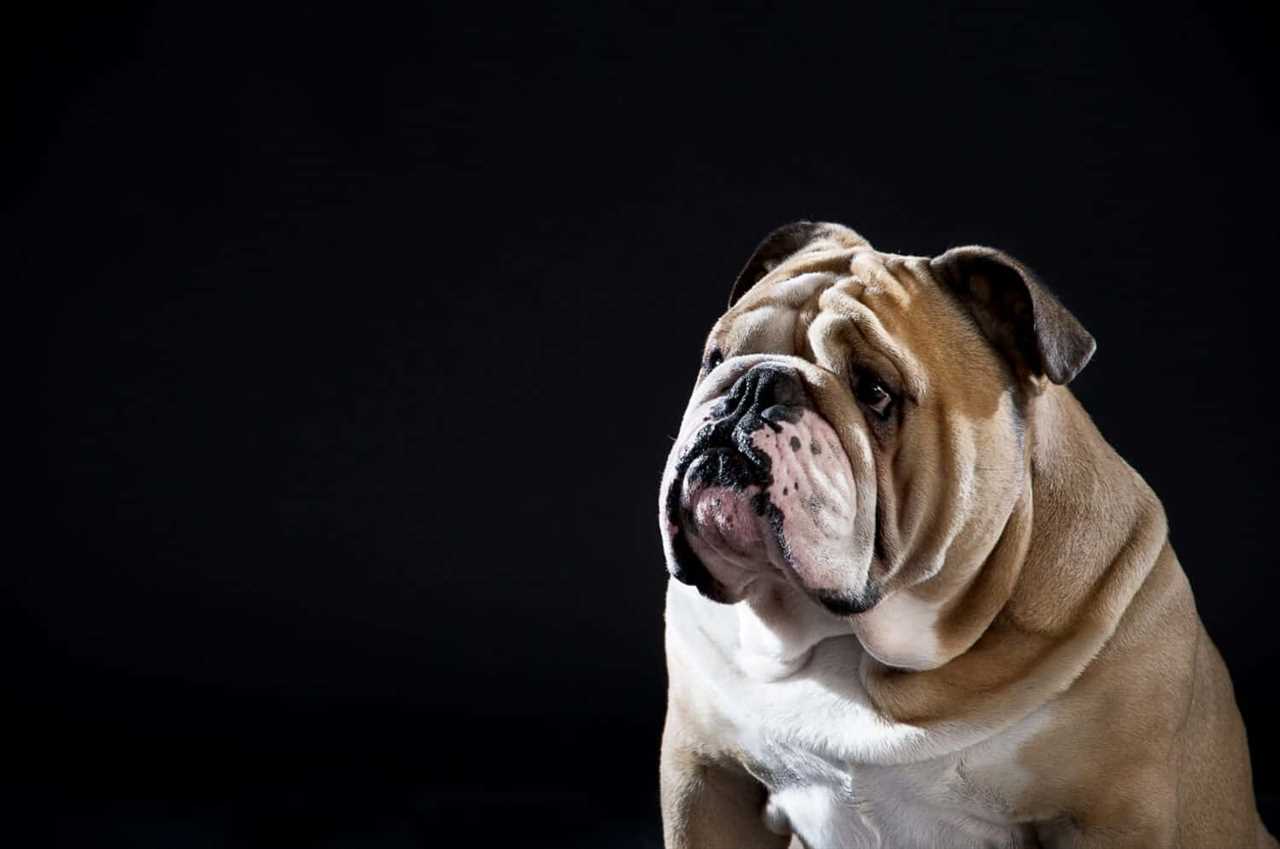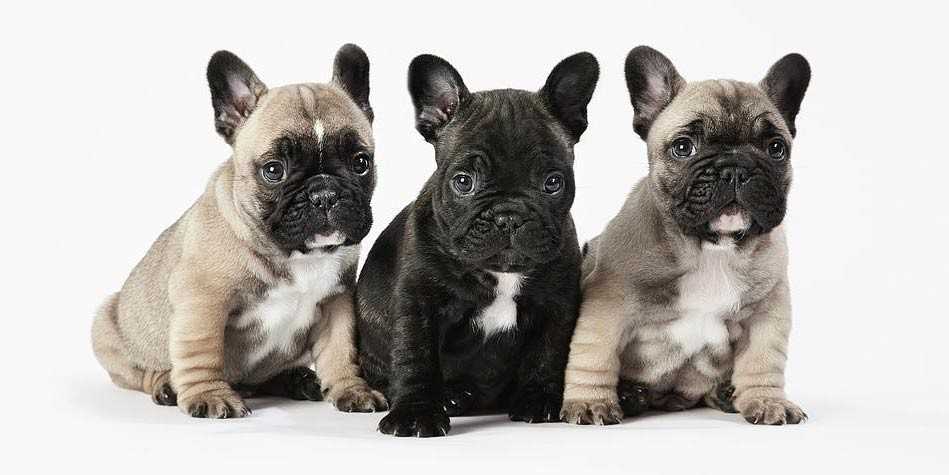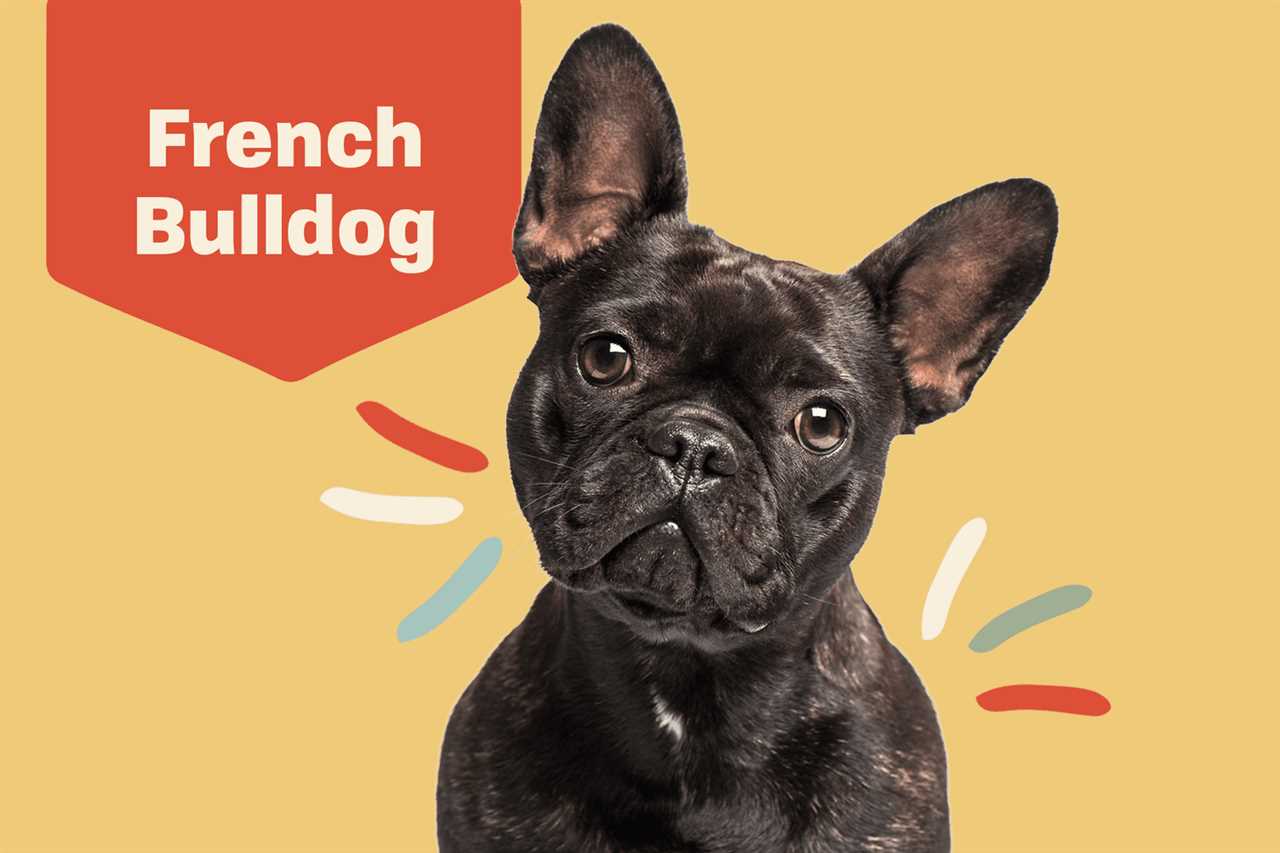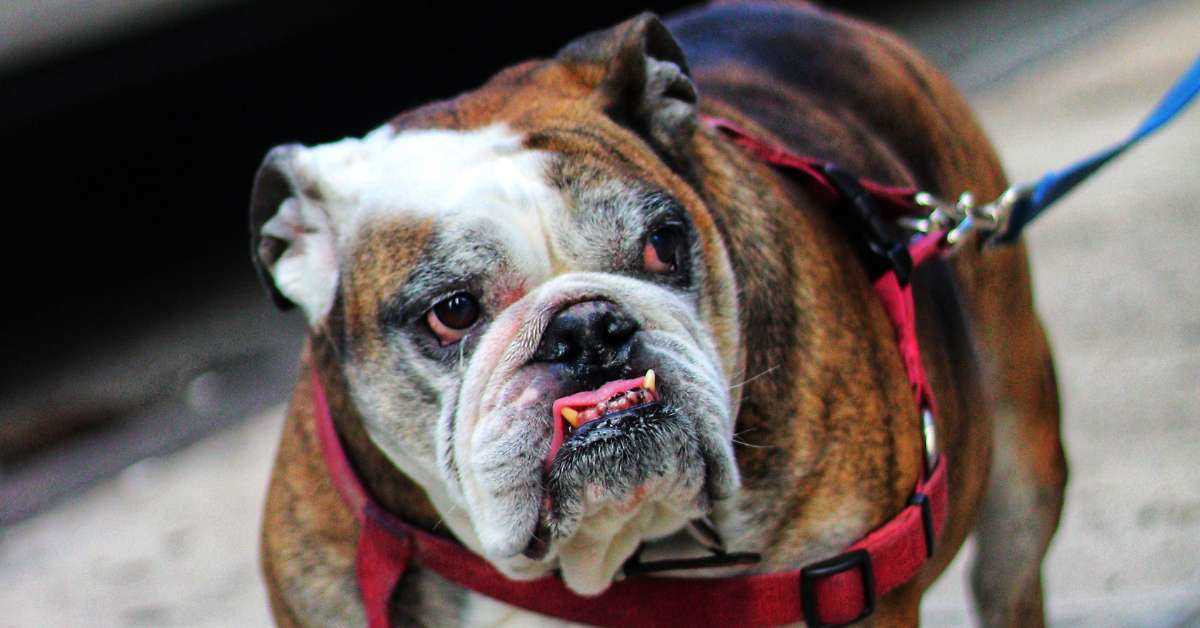
The black and brown bulldog is a truly remarkable breed of dog that has captured the hearts of many dog lovers around the world. With its distinctive appearance and charming personality, this breed has become a popular choice for those seeking a loyal and affectionate companion.
Known for their strong and muscular build, black and brown bulldogs are often seen as symbols of strength and resilience. Their broad chests, powerful jaws, and wrinkled faces give them a unique and imposing look that is impossible to ignore. But beneath their tough exterior lies a heart of gold.
Despite their somewhat intimidating appearance, black and brown bulldogs are known for their gentle and loving nature. They are incredibly loyal to their owners and are always eager to please. With proper training and socialization, they can become well-behaved and obedient pets that are a joy to be around.
One of the most endearing qualities of black and brown bulldogs is their playful and mischievous nature. They love to engage in games and activities that challenge their minds and bodies. Whether it’s a game of fetch in the park or a puzzle toy that requires problem-solving skills, these dogs are always up for a challenge.
In addition to their playful nature, black and brown bulldogs are also known for their affectionate and gentle disposition. They thrive on human companionship and enjoy being a part of the family. Whether it’s cuddling on the couch or going for long walks, these dogs are happiest when they are by your side.
Overall, the black and brown bulldog is a fascinating canine companion that offers both beauty and brains. With their unique appearance and loving personality, they truly stand out from the crowd. If you’re looking for a loyal and affectionate pet that will bring joy to your life, look no further than the black and brown bulldog.
Appearance and Physical Characteristics

The Black and Brown Bulldog is a fascinating canine companion known for its unique appearance and distinct physical characteristics. This breed is instantly recognizable with its muscular build, wrinkled face, and short, stout stature.
The Bulldog has a medium-sized body that is well-proportioned and compact. It has a broad chest and strong shoulders, giving it a powerful and sturdy appearance. The breed’s head is large and round, with a prominent forehead and a short, wide muzzle. The Bulldog’s eyes are set low and wide apart, giving it a distinctive and expressive look.
One of the most notable features of the Black and Brown Bulldog is its wrinkled face. The folds and wrinkles on its forehead and cheeks give it a unique and endearing expression. However, it is important to note that these wrinkles require regular cleaning and care to prevent skin infections.
The Bulldog has a short, smooth coat that comes in various colors, including black and brown. The coat is dense and glossy, providing protection against the elements. Despite its short coat, the Bulldog is known to shed moderately throughout the year, so regular brushing is necessary to keep its coat looking neat and healthy.
When it comes to size, the Black and Brown Bulldog is considered a medium-sized breed. Males typically weigh between 50-55 pounds, while females weigh slightly less, ranging from 40-45 pounds. Height-wise, Bulldogs stand around 12-16 inches at the shoulder.
The History and Origin of the Bulldog

The Bulldog is a breed that has a rich and fascinating history. Its origins can be traced back to ancient times, where it was believed to have been developed for bull-baiting, a popular sport in medieval England. The Bulldog’s original purpose was to attack and immobilize bulls, hence its name.
During the 13th century, bull-baiting became a popular form of entertainment, and Bulldogs were bred specifically for this purpose. They were known for their tenacity, strength, and courage in the face of a charging bull. Bulldogs were bred to have a stocky and muscular build, with a strong jaw and a wide head, which made them well-suited for their role in bull-baiting.
However, in 1835, bull-baiting was banned in England, and the Bulldog faced the risk of extinction. Fortunately, a group of dedicated breeders stepped in to save the breed. They began to selectively breed Bulldogs for their friendly and gentle temperament, as well as their distinctive appearance.
Over time, the Bulldog’s appearance changed, with breeders focusing on creating a more compact and muscular body, a pushed-in nose, and a distinctive wrinkled face. These changes resulted in the modern Bulldog that we know today.
Today, Bulldogs are popular companion dogs known for their friendly and affectionate nature. They are often described as being docile, loyal, and great with children. Despite their tough appearance, Bulldogs are gentle and loving, making them excellent family pets.
Personality Traits and Temperament
The Black and Brown Bulldog is known for its unique personality traits and temperament. Despite their strong and muscular appearance, these dogs are actually quite friendly and affectionate. They are known to be loyal and devoted to their owners, making them excellent companions.
One of the most notable personality traits of the Black and Brown Bulldog is their gentle and patient nature. They are known to be great with children and can be very tolerant of their playful antics. This makes them a popular choice for families with young kids.
Another characteristic of these dogs is their protective nature. Black and Brown Bulldogs are known to be very protective of their families and will not hesitate to defend them if they sense any danger. This makes them excellent watchdogs and can provide a sense of security to their owners.
Despite their protective instincts, Black and Brown Bulldogs are generally not aggressive towards strangers. They are usually friendly and welcoming to visitors, although they may be a bit cautious at first. With proper socialization, they can get along well with other dogs and pets as well.
These dogs are also known for their calm and laid-back temperament. They are not overly energetic and are generally content with moderate exercise. However, they still require daily walks and mental stimulation to keep them happy and healthy.
It’s important to note that every dog is an individual and may have their own unique personality traits. While the Black and Brown Bulldog is generally known for its friendly and gentle nature, it’s still important to provide proper training and socialization to ensure they grow up to be well-behaved and balanced dogs.
| Personality Traits | Temperament |
|---|---|
| Friendly | Gentle |
| Loyal | Protective |
| Affectionate | Calm |
| Tolerant | Laid-back |
Training and Exercise for a Black and Brown Bulldog
Training and exercise are essential for a black and brown bulldog’s overall well-being and happiness. Bulldogs are intelligent dogs that thrive on mental and physical stimulation. Here are some tips to help you train and exercise your bulldog:
1. Start training early: It’s important to start training your bulldog from a young age. This will help establish good behaviors and prevent any bad habits from forming. Use positive reinforcement techniques such as treats and praise to reward good behavior.
2. Be consistent: Bulldogs respond well to consistent training methods. Use the same commands and cues every time you train your dog. This will help them understand what is expected of them and make the training process more effective.
3. Use positive reinforcement: Bulldogs are sensitive dogs, so it’s important to use positive reinforcement techniques during training. Reward your dog with treats, praise, and affection when they perform a desired behavior. This will motivate them to repeat the behavior in the future.
4. Keep training sessions short and fun: Bulldogs have a short attention span, so it’s important to keep training sessions short and engaging. Aim for 10-15 minute sessions and make them fun by incorporating games and toys. This will help keep your bulldog interested and focused during training.
5. Socialize your bulldog: Bulldogs can be prone to aggression if not properly socialized. Expose your dog to different people, animals, and environments from a young age to help them develop good social skills. This will make them more confident and well-behaved in various situations.
6. Provide regular exercise: Bulldogs may have a tendency to gain weight, so it’s important to provide them with regular exercise. Take your dog for daily walks or play games such as fetch to keep them active. Regular exercise will help keep your bulldog fit and prevent obesity-related health issues.
7. Be patient and consistent: Training a bulldog can be challenging at times, but it’s important to be patient and consistent. Bulldogs respond best to positive reinforcement and a calm, assertive approach. Consistency in training methods and expectations will help your bulldog understand what is expected of them.
Remember, training and exercise should be a positive and enjoyable experience for both you and your black and brown bulldog. With patience, consistency, and plenty of love, you can help your bulldog become a well-behaved and happy companion.
Grooming and Care Tips for a Healthy Bulldog
Grooming is an essential part of caring for a black and brown bulldog. These dogs have a short, dense coat that requires regular brushing to remove loose hair and prevent matting. Use a soft-bristled brush or a grooming glove to gently brush your bulldog’s coat, paying extra attention to areas with folds and wrinkles.
In addition to regular brushing, it is important to clean your bulldog’s ears regularly. Bulldogs are prone to ear infections due to their floppy ears and can develop a buildup of wax and debris. Use a gentle ear cleaning solution and a cotton ball to clean the outer part of the ear, avoiding the ear canal.
Another important aspect of grooming is dental care. Bulldogs are prone to dental issues, so it is essential to brush their teeth regularly. Use a dog-specific toothbrush and toothpaste to brush your bulldog’s teeth at least two to three times a week. This will help prevent plaque buildup and maintain good oral hygiene.
When it comes to bathing your bulldog, it is recommended to do it once every two to three months or as needed. Use a mild dog shampoo and warm water to lather and rinse your bulldog’s coat thoroughly. Be sure to dry your bulldog completely, paying extra attention to the folds and wrinkles to prevent skin infections.
Trimming your bulldog’s nails is also an important part of their grooming routine. Bulldogs have thick nails that can become long and sharp if not trimmed regularly. Use a dog nail clipper or grinder to carefully trim the nails, taking care not to cut into the quick, which can cause bleeding.
Lastly, regular check-ups with a veterinarian are crucial for maintaining your bulldog’s overall health. Bulldogs are prone to certain health issues, such as hip dysplasia and respiratory problems, so it is important to monitor their health and seek professional advice when needed.
| Grooming and Care Tips for a Healthy Bulldog: |
|---|
| – Regularly brush your bulldog’s coat to remove loose hair and prevent matting. |
| – Clean your bulldog’s ears regularly to prevent ear infections. |
| – Brush your bulldog’s teeth regularly to maintain good oral hygiene. |
| – Bathe your bulldog once every two to three months or as needed using a mild dog shampoo. |
| – Trim your bulldog’s nails regularly to prevent them from becoming long and sharp. |
| – Schedule regular check-ups with a veterinarian to monitor your bulldog’s overall health. |
By following these grooming and care tips, you can ensure that your black and brown bulldog remains healthy and happy for years to come.
Feeding and Nutrition Guidelines for a Bulldog

Proper nutrition is essential for the health and well-being of your black and brown bulldog. Bulldogs have specific dietary needs that should be met to ensure they maintain a healthy weight and avoid common health issues.
Dietary Requirements
A black and brown bulldog’s diet should consist of high-quality dog food that is specifically formulated for their breed. Look for a dog food that is rich in protein, as this is essential for muscle development and overall health. Avoid foods that contain fillers, artificial additives, and by-products.
It’s important to feed your bulldog the appropriate amount of food based on their age, weight, and activity level. Consult with your veterinarian to determine the correct portion size for your dog. Overfeeding can lead to obesity, which can put additional strain on their joints and increase the risk of health problems.
Meal Frequency
Adult bulldogs should be fed twice a day, while puppies may require three or four meals a day. Splitting their daily food intake into multiple meals helps prevent bloating, which is a common issue in bulldogs. Bloating can be life-threatening and requires immediate veterinary attention.
Water Intake

Make sure your bulldog has access to fresh, clean water at all times. Bulldogs are prone to overheating, so it’s crucial to keep them hydrated, especially during hot weather or after exercise.
Special Considerations
Bulldogs are known for their flat faces, which can make eating and drinking more challenging. Some bulldogs may benefit from using a slow feeder bowl or elevated food and water dishes to make mealtime easier and prevent choking or inhaling food.
Additionally, bulldogs are prone to food allergies and sensitivities. If you notice any signs of digestive upset, such as diarrhea or vomiting, consult with your veterinarian to determine if a dietary change is necessary.
Monitoring Weight

Regularly monitor your bulldog’s weight and body condition to ensure they are maintaining a healthy weight. Obesity can lead to a variety of health issues, including joint problems, heart disease, and diabetes. If you notice your bulldog gaining or losing weight, consult with your veterinarian to adjust their diet accordingly.
Remember, proper nutrition plays a significant role in the overall health and longevity of your black and brown bulldog. By following these feeding and nutrition guidelines, you can help ensure your bulldog remains happy and healthy for years to come.
Health Issues and Common Concerns for Bulldog Owners
As a bulldog owner, it is important to be aware of the common health issues and concerns that can affect this breed. Bulldogs are known to have a number of health problems, some of which are genetic and others that are related to their unique physical characteristics.
Respiratory Issues
One of the most common health issues for bulldogs is respiratory problems. Due to their short snouts and flat faces, bulldogs can have difficulty breathing, especially in hot weather or during exercise. It is important to monitor your bulldog closely and provide them with plenty of rest and shade to prevent overheating.
Skin Problems

Bulldogs are prone to various skin problems, including allergies, dermatitis, and infections. Their wrinkles and folds can trap moisture and bacteria, leading to irritation and infection. Regular cleaning and drying of the wrinkles, as well as proper grooming, can help prevent these issues.
Joint and Bone Issues
Bulldogs are also susceptible to joint and bone problems, such as hip dysplasia and arthritis. Their heavy build and short legs put extra strain on their joints, which can lead to pain and mobility issues. Regular exercise and maintaining a healthy weight can help minimize the risk of these conditions.
Eye Problems

Bulldogs have prominent eyes that are susceptible to a variety of problems, including cherry eye, dry eye, and corneal ulcers. Regular eye examinations and proper care, such as keeping the eyes clean and using lubricating eye drops if necessary, can help prevent and manage these issues.
Overheating and Heat Stroke

Due to their brachycephalic (short-faced) anatomy, bulldogs are more prone to overheating and heat stroke. It is important to keep your bulldog cool and avoid exposing them to high temperatures for extended periods of time. Provide them with plenty of water, shade, and a cool environment, especially during hot summer months.
It is crucial for bulldog owners to work closely with a veterinarian who is familiar with the breed and its specific health needs. Regular check-ups, vaccinations, and preventive care are essential for maintaining the overall health and well-being of your beloved bulldog.
The Importance of Responsible Ownership and Adoption
Responsible ownership and adoption are crucial for the well-being of any bulldog, including the black and brown bulldog. Owning a dog is a significant responsibility and should not be taken lightly. It is important to understand the commitment and dedication required to provide a loving and caring home for a bulldog.
Benefits of Responsible Ownership
When you become a responsible owner, you are not only enhancing the life of your bulldog but also contributing to the overall well-being of the entire bulldog community. Responsible ownership includes providing proper nutrition, regular exercise, and veterinary care. By meeting these basic needs, you can ensure that your bulldog leads a happy and healthy life.
Responsible ownership also involves socializing your bulldog and training them to be well-behaved members of society. This not only benefits your dog but also creates a positive image for bulldogs and helps reduce the stigma associated with certain breeds.
The Importance of Adoption
Adopting a bulldog from a reputable rescue or shelter is a responsible choice. By adopting, you are giving a second chance to a dog in need and providing them with a loving forever home. Many bulldogs end up in shelters due to various reasons, such as changes in their owners’ circumstances or simply because they were not properly cared for.
When you adopt a bulldog, you are not only saving their life but also freeing up space in the shelter for another dog in need. Additionally, adopting a bulldog can be a more affordable option compared to buying from a breeder. Rescue organizations often provide necessary vaccinations, spaying/neutering, and microchipping, reducing the initial costs associated with owning a dog.
Choosing the Right Bulldog

Responsible ownership also involves carefully selecting the right bulldog for your lifestyle and home environment. Bulldogs have different temperaments and energy levels, so it is important to choose a bulldog that matches your preferences and capabilities as an owner.
Consider factors such as exercise requirements, grooming needs, and any specific health concerns associated with the breed. It is also essential to research and find a reputable breeder or rescue organization to ensure that you are getting a healthy and well-cared-for bulldog.
Conclusion
Being a responsible owner and choosing adoption over purchasing from a breeder not only benefits your bulldog but also contributes to the welfare of the entire bulldog community. By providing a loving and caring home, you can make a positive impact on the lives of these wonderful dogs. Remember, responsible ownership and adoption are key to the well-being of bulldogs and ensuring a bright future for the breed.
| Benefits of Responsible Ownership | The Importance of Adoption | Choosing the Right Bulldog |
|---|---|---|
| Enhances the life of your bulldog | Gives a second chance to a dog in need | Select a bulldog that matches your lifestyle |
| Contributes to the well-being of the bulldog community | Saves a life and frees up space in the shelter | Consider exercise, grooming, and health needs |
| Creates a positive image for bulldogs | More affordable option compared to buying from a breeder | Research and find a reputable breeder or rescue organization |

Tyler Newsom, a canine enthusiast, is passionate about bulldogs and their coat care. With years of experience and dedication, he shares his expertise to help bulldog owners maintain their beloved pets’ fur health and vitality through practical tips and advice.
